GeForce GTX 580 Showdown: ASUS Matrix vs.EVGA Classified
EVGA GeForce GTX 580 Classified 3072MB
Next we have the EVGA GeForce GTX 580 Classified 3072MB graphics card that is available under the part number 03G-P3-1588-AR for $599.99 plus shipping. This card has the GeForce GTX580 GPU core clocked at 855 MHz and the 3072MB of GDDR5 RAM is clocked at 4212 MHz (1053 MHz GDDR5). The stock core clock on the NVIDIA GeForce GTX 580 is 772MHz, so this card features a 83MHz core clock increase. This is a 10.8% improvement, so it should provide a very noticeable and significant bump in gaming performance. When it comes to buying a GeForce GTX 580 graphics card the fastest core clock available on the market today is 855 MHz and only the EVGA GeForce GTX Classified and the GIGABYTE Super Overclock are available with those speeds.
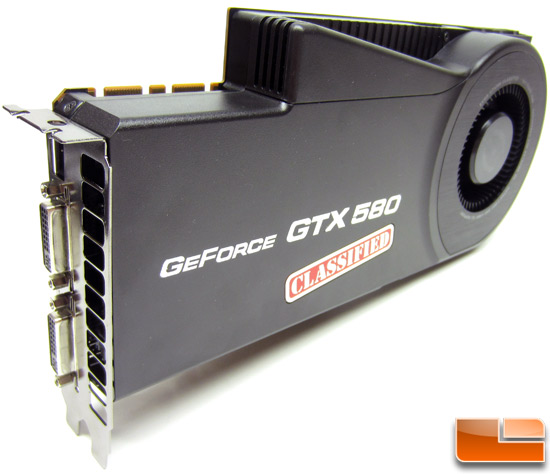
The EVGA GeForce GTX 580 Classified is very different looking and is nothing like the ASUS MATRIX GTX580 Platinum that we just showed you. For starters this this video card is built up rather than out! It takes up only two expansion slots thanks to this fact, which should make running SLI much easier.
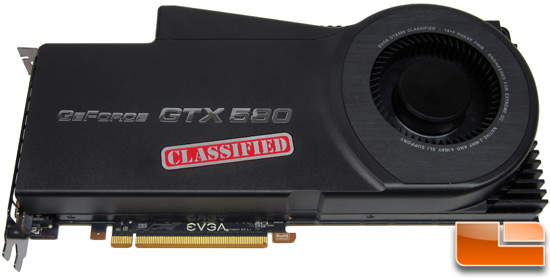
The EVGA GeForce GTX 580 Classified measures in at 11″ in length, 5.25″ in height and is 2.5″ in thickness! We really like that EVGA managed to stick to a two slot cooling design, but it will be interesting to see what the temperatures and noise levels are like with this cooler. The black fan shroud that goes over the heatsink is made from plastic, but it has a nice look to it.
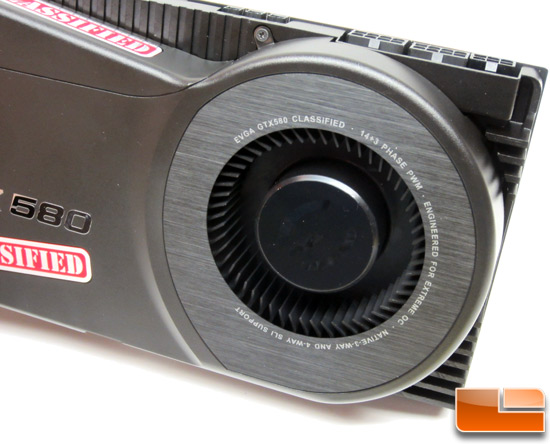
EVGA uses a single 8CM ‘hamster wheel’ fan to keep the NVIDIA GeForce GTX 580 GPU nice ans quiet. EVGA put some of the features of the card around the cooling fan. The EVGA GeForce GTX 580 Classified features a 14+3 Phase Power Design that can deliver over 1000W of power. The 8CM fan shown in the image above is said to improve efficiency by as much as 30% when compared to the standard NVIDIA cooler.
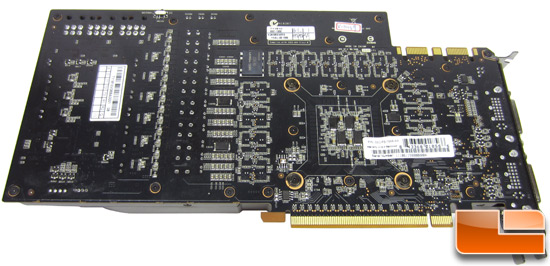
Flipping the card over we found that it doesn’t come with a backplate and we didn’t find any interesting features back here besides just the usual components. Like the ASUS MATRIX GTX580 Platinum, the EVGA GeForce GTX 580 Classified has the NEC/TOKIN 0E907 Proadlizer. The NEC Proadlizer, Super Low ESR SP-Cap capacitors, and high frequency 3MHz shielded inductors provide clean and precise voltage control, and the onboard voltage probe points lets you monitor them with ease.
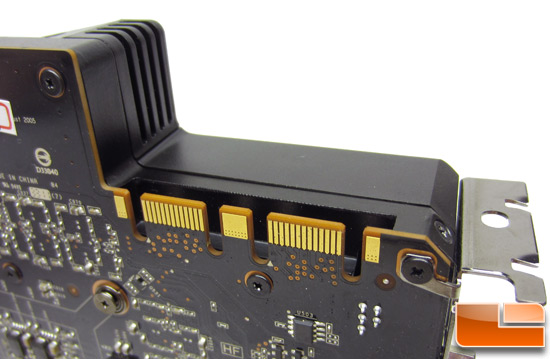
The EVGA GeForce GTX 580 Classified can be run in SLI and has a pair of SLI bridges located along the top edge of the card. Since it features two connectors it means the card supports everything from a single card all the way up to 4-way SLI. EVGA says the dual slot top cooler design means that you don’t have to worry about space or motherboard limitations. Hot air for the GPU heatsink does exhaust out the top slot and into the PC case.
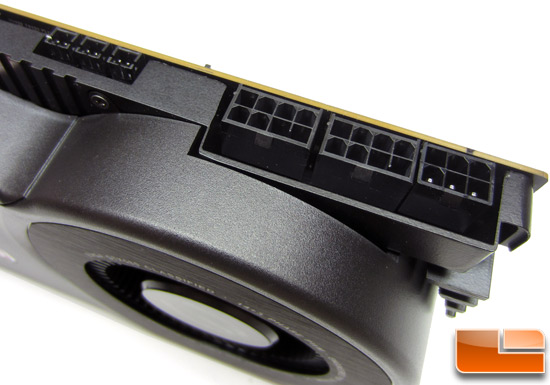
EVGA wanted to make sure you’d never run out of power with this card, so they placed two 8-pin PCIe and one 6-pin PCIe power connectors along the top edge of the card. EVGA suggests a 600W power supply with a +12V current rating of 42A for proper operation. It’s odd that ASUS and EVGA both recommend different sized power supplies, but you’ll want a beefy PSU.
To the left of the power connectors you’ll see three small connectors. These are the onboard voltage probe points that let you monitor the NVDD, FBVDD, and PEXVDD. For those that don’t know what those stand for:
- NVDD is voltage for GPU
- FBVDD is Framebuffer voltage
- PEXVDD is PCIExpress Voltage
These are labeled on the PCB on the back of the card. You can see these in the image below.
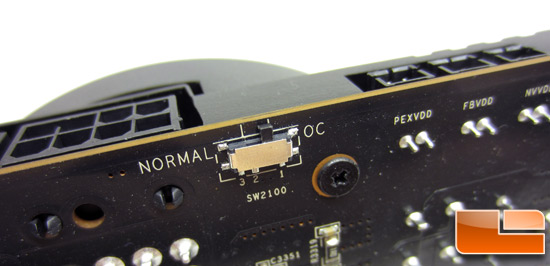
At first glance we thought the switch on the back of the card was a fan speed switch since it said ‘normal’ and ‘OC’, but it is actually a for dual BIOS versions. The retail box and the EVGA product page for this card don’t explain what this switch does. We blindly tried it on our own and found that the OC BIOS had the fans running at 100% with the thermal monitoring disabled. We were told this is needed for those doing extreme overclocking using LN2, which is something we won’t be doing today.
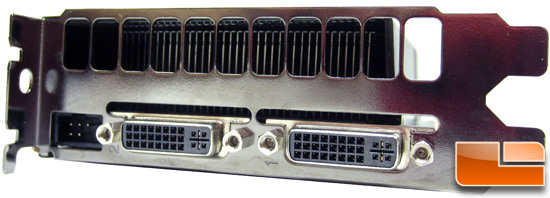
The back panel comes with one of EVGAs high flow exhaust brackets that allow for more air flow than the stock design. We also know that anything blocking airflow will cause more noise, so it should also keep noise down. For connections EVGA has a pair of DVI-I outputs that are rated to support resolutions up to 2560×1600 (2048×1536 w/ D-Sub). If you want to run HDMI and Display Port you’ll have to use the adapters that come with the card in the bundle. The odd looking proprietary plug on the far left is for EVGA’s EVBot System accessory kit. The EVGA EVBot tuning Utility costs $101.99 and allows for real time hardware monitoring and voltage/clock adjustments.
Let’s take a closer look at the bundles and move on to benchmarking these cards in some games!

Comments are closed.